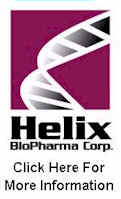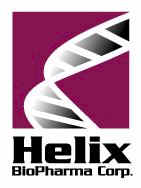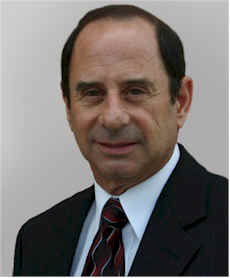Interview with: Donald Segal, Ph.D., President and CEO - featuring: their two major drug candidates under development; Topical Interferon Alpha-2b, which we are developing as a preventative therapeutic against cervical cancer caused by human papilloma virus or HPV infection, and the second, L-DOS47 for lung cancer, is based on our DOS47 platform technology, which has multiple potential anti-cancer therapeutic applications. L-DOS47, is a precisely targeted therapeutic against the most prevalent form of lung cancer, adenocarcinoma. |
|
| Helix BioPharma Corp. (HBP-TSX) (Frankfurt WKN 918864) | |
|
|
CURRENT ISSUE | COVER ARCHIVES | INDEX | CONTACT | FINANCIALS | MARKETING SERVICES | HOME PAGE |
|
This is a printer friendly page! Focused On The Cancer Space, Helix BioPharma’s First Two
Product Candidates Are A Topical Preventative Therapeutic Against Cervical Cancer And A
Precisely Targeted Therapeutic Against The Leading Form Of Lung Cancer BIO: Helix is actively researching a host of potential new anti-cancer drug-products based on its proprietary core technologies. The company is committed to investigating new directions in the field of cancer therapy by exploiting new technologies for and approaches to drug development and disease management. Established by amalgamation in 1995, Helix is publicly listed, with
its common shares traded on the Toronto Stock Exchange. In addition, the Corporation is
quoted on the Frankfurt, Munich, Stuttgart and Berlin stock exchanges. Helix's trading
symbol is "HBP.". Our business strategy is to develop products through mid-stage clinical trials and commercialize them mainly through royalty-bearing third-party partnerships, a strategy demonstrated with our first successfully launched product, Klean-Prep™.” CEOCFO: Please tell our readers
about you’re drug pipeline. CEOCFO: What makes Helix
unique? The way we achieve this effect is by delivering an enzyme drug called urease by intravenous injection to the site of tumors in the body, by virtue of a conjugated tumor-specific antibody. The antibody, in turn, is believed to anchor the urease to the external surfaces of the tumor cells, following which the urease enzyme is intended to catalyse a powerful, cancer cell killing extracellular reaction.” CEOCFO: What is the school of
thought behind your technology? At the site of the tumor, among DOS47’s cascade of actions, we believe we are changing the tumor microenvironment in such a way that we are raising the local alkalinity, hopefully to a point where in fact we counteract cancer cell survival because cancer cells otherwise exist and propagate in an acidic environment. Probably the single factor we found most interesting is that virtually all solid tumors surround themselves in an acid medium, which effectively neutralizes the body’s natural immune defenses against cancer. Left unchecked in an acidic environment, tumors grow and destroy normal tissues around them, replacing normal tissues with diseased tissues. Our research also shows that L-DOS47 has chemotherapeutic
potentiating or so called chemo-potentiating properties, and we intend to validate our
findings in human clinical trials. The value we see from that standpoint is that L-DOS47,
because of its microenvironmental alkalizing actions, may additionally function to enhance
cancer cell uptake of conventional chemotherapeutic compounds, otherwise compromised by
tumor acidity. As a result, we see great potential for L-DOS47 to act in synergy with
conventional chemotherapeutic drugs.” Another aspect that distinguishes our approach is that our enzymatic action has the potential to function in a highly repetitive manner, thereby making it extremely powerful. We like to refer to this as an amplification factor. Simply, a DOS47 drug molecule does not just act once before being excreted by the body. Rather, it has the potential to act over and over upon the substrate molecule urea, which occurs in plentiful supply in the body, to produce its potent anti-cancer metabolites at the site of the tumor. As well, conventional chemotherapies are not generally targeted
specifically to certain tumor types. Rather, they indiscriminantly attack all rapidly
dividing cells, cancerous and healthy, which is the main reason that conventional
chemotherapy drugs often have severe, dose-limiting side-effects.” Using our topical dosage form, we envision conducting clinical testing for a range of potential therapeutic indications. We are most advanced in trying to prevent cervical cancer by treating certain HPV-induced cervical lesions before they become cancerous. We believe our topical Interferon Alpha-2b dosage form is the first and only such product under development industry-wide. Millions of women have HPV infections and are therefore at greater risk for cervical cancer. While there are now vaccines that can prevent some HPV infections from occurring in healthy women, many will not get the vaccine for a variety of reasons. Accordingly, HPV infections will likely continue to represent a major medical problem for many years to come, for which there is no approved pharmaceutical treatment. We are working hard to change this.” CEOCFO: Will your L-DOS47
technology be used as a standalone or as an adjunct therapy? Chemotherapeutic agents attack rapidly dividing cancer cells as well as other rapidly dividing cells that are not cancerous. Because of this, chemotherapeutic agents tend to cause significant, often debilitating side effects; so many patients refuse to take them or can only tolerate sub-optimal doses. With our L-DOS47 product candidate, we believe that we induce an alkalizing effect locally at the tumor site, in turn allowing enhanced cancer cell uptake of certain conventional chemotherapeutic compounds. We believe that by enabling this, it will be possible to give significantly lower doses of chemotherapeutic drugs, perhaps as little as 20% of the standard dose, and still produce the same cell-killing effect on the cancerous tissue. That would be a big step forward in terms of side-effect reduction and would give patients more hope while improving patient compliance. To accelerate our DOS47 pipeline, we are seeking to establish partnerships and alliances with major pharmaceutical companies who are leaders in cancer chemotherapy with interests in developing potent adjunct therapeutic regimens combining our DOS47 technology and their compounds.” CEOCFO: How do you maintain the
competitive edge? CEOCFO; Tell us about your
senior management team and their strengths. CEOCFO: How are you planning to
grow and do you have the capital or credit to accomplish this? We are always looking for new drug candidates to add to our product pipeline, both through our in-house R&D efforts and through prospective M&A events. Furthermore, we believe that our present drug development initiatives are nearing stages that will give them significant “big pharma” partnering potential within the foreseeable future. Achieving such partnerships for biopharmaceutical companies usually causes the markets to respond positively, so that a company’s valuation and positioning can strengthen in order to continue the cycle of attracting new, value-creating business opportunities. With respect to our capital resources, we are actively seeking financing to execute our business plan for the next 24 months. We believe we are well positioned to attract continued funding in the coming months, given our noteworthy products and technologies, our seasoned team of professionals and our attractive valuation at this stage in our development.” CEOCFO: How is the company
positioned in the market place? Based on our clinical findings to date, we believe that we are well on our way to having a product with the potential to offer millions of women a simple, self-medicated, safe and effective means to resolve their lesions. We expect that this will have tremendous benefits, not only medically but also from a “peace-of-mind” perspective for those women who would otherwise not be candidates for therapy today. In the case of our L-DOS47 initiative, there simply are no
effective treatments available today for lung adenocarcinomas; the most prominent and
deadly form of lung cancer affecting over 90,000 Americans a year. We believe we are
developing a potential breakthrough approach to target and destroy lung cancer cells, as
I’ve described, which will differentiate us significantly from our peers and
competitors.” After much hard work and dedication at the preclinical and proof-of-concept stages, our products are poised to significantly advance through clinical development over the next few years. As we move forward, I believe that there is excellent potential
for the Company’s valuation and programs to advance considerably for all the reasons
I’ve stated, and I look forward to the work that lies ahead to make this
happen.” |
|
“Our goal is to bring truly unique and exceptional drug products to market, which will thereby distinguish Helix as a leader among its peers and competitors. With each of our two drug development initiatives presently underway, we have products designed to address major unmet medical and market needs. We believe that we represent innovators and leaders in the development of treatments for precancerous cervical lesions and lung adenocarcinomas.” - Donald Segal, Ph.D. |
|



